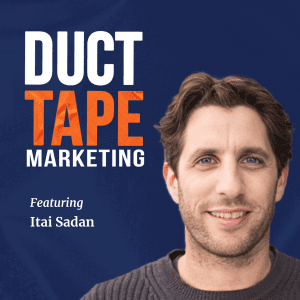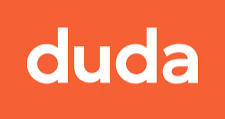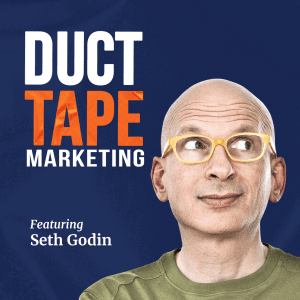How to Ask The Right Questions Using Thoughtful Curiosity written by John Jantsch read more at Duct Tape Marketing
The Duct Tape Marketing Podcast with Dr. Amber L. Wright
In this episode of the Duct Tape Marketing Podcast, I had the pleasure of interviewing Dr. Amber Wright. Dr. Amber L. Wright is a communication expert, coach, facilitator, and former communication professor. She helps organizations improve how they make their people feel seen, heard, and valued. As an executive coach and speaker, she guides leaders to express their highest selves with authentic authority and grace. Her popular TEDx Talk, “Ask Better Questions to Build Better Connections,” has inspired people around the world to become stronger communicators in their everyday lives. Dr. Wright has been featured in Fast Company, Essence, and Mashable, and is the creator of Can We Talk? Cards – 50 questions designed to take the guesswork out of small talk.
We talk about the importance of asking the right questions to foster better connections and how self-awareness and active listening are crucial in effective communication, especially in business settings. Dr. Wright’s emphasis on making others feel seen and heard and how thoughtful curiosity can enhance interpersonal relationships. Our conversation also touches on navigating different personalities within teams and strategies for resolving conflicts.
Key Takeaways:
- Every relationship begins or ends with a question.
- Asking open-ended questions invites more profound reflection.
- Self-awareness is essential for effective leadership.
- Listening to understand is more important than listening to reply.
- Thoughtful curiosity helps in asking appropriate questions.
- The relationship with oneself is the most important.
- Questions can help challenge limiting beliefs.
- Understanding personality differences improves team communication.
- Conflict resolution requires understanding the other person’s perspective.
- Engagement in conversations can be enhanced through thoughtful questions.
Chapters:
- [00:00] The Power of Questions
- [03:06] Feeling Seen and Self-Awareness
- [05:54] The Art of Listening
- [09:02] Engaging in Business Conversations
- [12:06] Intrapersonal Communication and Self-Reflection
- [15:03] Navigating Different Personalities
- [18:02] Conflict Resolution Strategies
More About Dr. Amber L. Wright:
John Jantsch (00:00)
Hello and welcome to another episode of the duct tape marketing podcast. This is John Jantsch and my guest today is Dr. Amber Wright. She is a communication expert, coach, facilitator and former communication professor. She helps organizations improve how they make their people feel seen, heard and valued. As an executive coach and speaker, she guides leaders to express their highest selves with authentic authority and grace. Her popular TEDx talk, Ask Better Questions to Build Better Connections has inspired people around the world to become stronger communicators in their everyday lives. So do I call you Dr. Amber, Dr. Wright? Either way, welcome to the show.
Dr. Amber Wright (00:41)
Thank you. can call me Dr. Amber. Amber’s just fine as well.
John Jantsch (00:45)
So let’s start with referencing your TED Talk. Why questions? Why are questions so powerful? Or why do you suggest that’s the medium for better connections?
Dr. Amber Wright (00:58)
That’s because every relationship that we ever enter into, personal or professional, begins or ends with a question. What’s your name? How are you? Are you single? Are you hiring? In the middle of it, what are we doing? Is this working? Is this not working? Is it over? So having that realization is the impetus of my work and in the sense that knowing that right why aren’t we better at asking questions since they’re so important.
John Jantsch (01:28)
Yeah. So as I listed that list of questions you gave as examples there, I mean, in some cases they’re almost punctuation to conversations, right? They’re almost not real questions. Like when somebody says, how are you? Do you ever really give that some thought? Well, let me think about it. But you do talk about the right questions though. can you give some examples of what you would suggest are powerful sort of right questions? I know they’re probably different different situations, but let’s go there for a
Dr. Amber Wright (01:52)
Yeah, I frame a better question or a right question, a good question as one that is open ended, obviously, and that also serves as an invitation. It invites the person to reflect. And I tell often, and I say this in my talk, my TEDx about how when my teenager now, when she was in grade school, I’d pick her up and say, how was your day? That’s technically an open ended question, but a better question is, what was the best part of your day?
John Jantsch (02:30)
Yeah.
Dr. Amber Wright (02:30)
today. That gives her an invitation then to reflect on her day and we can have a richer discussion as a result.
John Jantsch (02:38)
It’s much easier question to answer too, right? I mean, how was your day? I don’t know. Let me think. What did I do all day? Whereas a very specific question, I think, I mean, in a lot of contexts is easier for us. One of the pieces, you know, it’s in your bio and I know you talk about it in the talk is this idea of feeling seen. And I think that’s, it seems like that’s become a pretty common or almost trendy thing to say.
Dr. Amber Wright (02:42)
Dude, yeah.
John Jantsch (03:06)
And I wonder if you could make that practical for us. What does that mean?
Dr. Amber Wright (03:12)
I think when you make someone feel seen, there’s something about kind of quietly saying, I see you. And that comes by way of just paying closer attention. It’s noticing that, you know, someone on your team is tearful on a call or maybe they are off camera for some reason consistently. It’s noticing when it’s the drop of the shoulders non-verbally. It’s the role of the eye in a meeting. It’s being able to kind of notice the things that are happening around you in both times of chemistry and in conflict and be able to say, I see how you might be feeling disappointed by X, Y, and Z thing. How can I support you?
John Jantsch (03:40)
Thanks
Dr. Amber Wright (03:58)
To see someone is to acknowledge them.
John Jantsch (04:02)
So what are some of the kind of most, well, let me back up. was going to ask you for most, like, there’s lots of applications, lots of uses for this technique, if you will. But what are you, what role does self-awareness play in this? Right? I mean, as I listened to you talk about that idea of, I mean, you have to really be very aware of yourself, I think, to understand what’s going on in the other person’s world.
Dr. Amber Wright (04:32)
Absolutely. And that is the harder work that’s at play. I give keynotes and talks to leadership teams all the time. And to be a good leader, think the first thing, the first rule of order is to know thyself. You got to know who you are as a person because then that impacts the way that you show up as a leader. So then just interpersonally, who am I as a person?
John Jantsch (04:50)
Right, right.
Dr. Amber Wright (04:59)
How do I take in information? How am I energized? Do I prefer introversion, extroversion? That’s why personality assessments are so popular because they help give us language to grow in our self-awareness, to describe what it’s like to experience us as people. And I like to encourage people to do that work because it can be such a good investment in all of your interpersonal and professional relationship dynamics. Self-awareness is so key.
John Jantsch (05:26)
So I could create a list. In fact, I have created a list of questions that I plan to ask you, or at least something close to those.
Dr. Amber Wright (05:32)
Yes.
John Jantsch (05:37)
Equally important, as important as, maybe more important than the question is actually hearing what the person said. Right? I mean, so most of us are, I would say the majority of people are not great listeners. How key is that role?
Dr. Amber Wright (05:54)
You’re on a roll here, John. think after self-awareness, it’s listening. I always say we have two ears and one mouth for a reason so we can listen twice as much as we speak. And that is another layer of the deeper work. Are we slowing down enough to pay attention and to listen to understand, not only to reply. Many times we were just listening for that on-ramp to be able to say whether that person is right or wrong about whatever they’re telling you. And that’s not true active listening. And I think that’s why some people are so bad at it because it takes intention to say, I’m going to look you in the eye. I’m going to be present with you and pay attention to what you’re saying so that I can respond thoughtfully.
John Jantsch (06:37)
And let’s face it, you have to kind of care about what they’re saying.
Dr. Amber Wright (06:44)
Yeah, I think that’s relative. Because you might not, but it’s still worth it to pay attention.
John Jantsch (06:50)
Yeah, yeah, yeah. Do you want to give a couple examples? A lot of my listeners are business owners, entrepreneurs, or they work in team leaders and things of that nature. What are some examples of the different places, say, in a business that this is important? mean, we’ve got customers, some of them are happy, some of them are not so happy. We’ve got team members, we’ve got prospects in selling environments.
Dr. Amber Wright (07:14)
Okay, cool.
John Jantsch (07:19)
You know, is this what you’re talking about? Questioning a skill that we ought to bring to every one of those situations.
Dr. Amber Wright (07:25)
Absolutely. You can’t solve the client’s problem if you’re not listening to what they tell you. When you ask them the question, what’s the biggest challenge you’re having right now? And listening intently for the answer. And then that’s where we paraphrase and say, well, what I hear you saying is you’re struggling with your marketing or your messaging isn’t landing with your potential clients. This is how I can help you with that. So listening is paramount just as much as and asking really thoughtful questions as well.
John Jantsch (07:58)
Yeah, and I know just in my own selling situation, certainly in my own leadership role with my organization, if I just lecture, people check out pretty fast. And so certainly questioning is a way to keep engagement, keep attention too, isn’t it? mean, we all, it’s almost like in school, like if you think the teacher’s gonna call on you, you’re gonna pay more attention, right?
Dr. Amber Wright (08:10)
Yeah. Yeah.
John Jantsch (08:24)
Even if all they’re doing is repeating back what you said. I mean, how much of that is almost a tactic in some ways to keep people engaged?
Dr. Amber Wright (08:34)
It’s a lot of it is and I think that’s why it’s important for us to be thoughtful about how we show up and how we engage. You mentioned earlier the example of how we say things like, how are you doing? Even though that’s a question, we use it as a punctuation statement. I don’t answer. My answer to that is I’m good, thank you. Because I want to pause and say, do I really want to ask this person how they’re doing?
John Jantsch (08:55)
Yeah, yeah.
Dr. Amber Wright (09:02)
If I know that I don’t have time to actually listen. And that helps me to kind of slow down enough to be thoughtful about that. And that’s what I think that can be of service to us as business owners and entrepreneurs. Again, are we asking thoughtful questions and are we listening intently for the responses?
John Jantsch (09:20)
How much awareness may be the right word, but I know sometimes people, they’re clearly, they’ve clearly listened to you or had coaching from you. So they’re asking me questions, but I don’t know them well enough to feel like that’s a question I should answer to you. know, somebody before I meet them or even on LinkedIn, you know, will say, what are you most excited about, you know, this year in your business? And I’m like, I don’t even know who you are.
Dr. Amber Wright (09:32)
Hahaha! Mm-hmm. Yeah.
John Jantsch (09:50)
That seems like too far of a reach. So, you know, how do you kind of meter out like what’s an appropriate question given the level of our relationship?
Dr. Amber Wright (10:01)
That I think comes down to being able to just keep your finger on the pulse of the environment. know, that’s such thing as reading the room and engaging. Or if I’m at a networking event or if I’m at a conference, I’m meeting somebody for the first time. I’m not going to tell them my whole life story. I some people do, but you know, I’m going to be thoughtful and going to be mindful. So I use what I call thoughtful curiosity and that is to inquire without being intrusive.
John Jantsch (10:07)
Yeah, yeah.
Dr. Amber Wright (10:24)
And that takes, it goes back to that big I word of intention, that takes me thinking about like, all right, if I’m going to this event, how do I want to show up and how do I want to engage with people? And then let that inform the types of questions that you ask. So for example, if you’re meeting someone for the first time, instead of just the, what do you do? You can say, what inspires you about your work? It’s a more thoughtful question, but it’s not intrusive. And it’s a better question, just, so what do you do? Right? So it’s that kind of intention that I’m speaking of.
John Jantsch (10:56)
All right, so let’s say your intention is awesome, and you ask a question like that, and it really goes to like a dark or negative place, you right off the bat. And you’re like, wow, I really wasn’t trying to go there. How do you handle situations that kind of go off, you know, where you were intending to go?
Dr. Amber Wright (11:17)
That goes back to being just a good human, I think. If someone responds and they’re just like, well, you know, I threw my back out, my wife left me, I’m having a bad day. You know, I’m sorry to hear that today’s not going well for you. I hope that it gets better. And then you let it go.
John Jantsch (11:20)
well, we’re done here. If that’s your answer, we’re done here. Right, right, right, right. Yeah. Right. Okay, so we’re talking about asking questions to others. I do a lot of meditation practice and a lot of the teachings around meditation are getting kind of the questions we ask ourselves out of the way or at least not holding us back. How do we frame questions we ask ourselves in a way that are going to be the right questions?
Dr. Amber Wright (11:53)
I love that you asked that question, John. It’s one of my favorite things to do, to talk about, because I say so often we focus on interpersonal communication. We don’t think enough about intrapersonal communication. So the number one relationship that you have in this world is the one that you have with yourself. So these same principles apply to how we talk to ourselves. I don’t meditate heavily, but I’m a journaler.
John Jantsch (12:14)
Right.Mm-hmm.
Dr. Amber Wright (12:31)
And that’s my opportunity to say, what’s going on girl? How are you really feeling about such things or about whatever is going on in your life? what do you want to do about it? What are you thinking about it? And just again, it’s another invitation for reflection so that I can grow in my self-awareness. I love communicating with myself and I talk out loud that, you know, I’m not ashamed to admit it. I talk out loud and I think that all of those things are in service to us getting to know ourselves better, which informs the way that we show up.
John Jantsch (13:04)
So let’s stay on that track a little bit. I mean, some of the questions that I think we ask ourselves, they’re sometimes deeply rooted in what all of our stories have been, right? And some of those really are limiting, that come from limiting beliefs. How do we, let’s say we’re saying, I want to stop doing that. I want to get out of that. Are there questions or are there practices that we can use to challenge our own limitations?
Dr. Amber Wright (13:31)
wow, that’s an excellent question, John. I think is the answer to that. And what I mean by that is what’s my issue? Really? How am I feeling? Really? That’s when we can dig a little deeper and get to the true heart of the matter. And a question that was very helpful to me that I listened, I heard in a book that I listened to last year, the author said, when it comes to defining or deciding what your true wants are, she says to ask yourself. If I knew that it would work out and I knew nobody would be mad at me, what would I want then? Wow, it was such a powerful tool to get me to reflect. So that’s when you can get as honest as you can because you’re the one that has to live with your truth. Yeah.
John Jantsch (14:28)
That’s what’s holding us back, right? All right, so let’s go back to teams again. Sometimes teams are made up of people that have vastly different personalities. So are there ways to, like some people, man, you come in, you ask them the most direct question you can, and they’re all about it. And then there are definitely other people that are like, no, we got to go through about eight layers of this before we’re to get anywhere deep, right? So how do you…
Dr. Amber Wright (14:38)
Yes.
John Jantsch (14:55)
How do you approach those situations where you’ve really got vastly different personalities that you need to communicate?
Dr. Amber Wright (15:03)
This is why I love, again, personality assessments. I’m a certified MyArch Greggs practitioner, for example, and we use those tools because if I’m onboarded to your team and I’m working at Duct Tape Marketing now, we’re sitting down, we’re having this meeting, and I say, you know, the way that I like to take in information is I need a lot of details, but you as the CEO are an idealist person, it’s helpful for me to know that.
John Jantsch (15:06)
Yeah.
Dr. Amber Wright (15:26)
I think sometimes on teams, don’t spend enough time talking about our individual selves and our individual approaches to the way that we work. And then we end up with some misunderstandings, miscommunications, challenges, conflicts, because I’m taking it personally that John is a big ideas person and he doesn’t give me the details that I need in order for me to feel secure to do my job. So I think carving out spaces for us to actually say, what is your communication style? What is your conflict style?
John Jantsch (15:55)
Yeah.
Dr. Amber Wright (15:55)
What is your leadership style? And being able to talk about that, I think can then empower and equip teams to work more efficiently. We just, we’re so busy we don’t have time doing it.
John Jantsch (16:03)
Do you think people know the answers to that? Like, have you asked me what’s my conflict style? I don’t know. Do I know? It’s usually like to run, but…
Dr. Amber Wright (16:14)
Also, you’re an avoider. Avoiding, competing, collaborating, compromising, accommodating. My avoiders are my runners.
John Jantsch (16:26)
Actually, I’ve gotten much better about that. So let’s talk about conflict for a minute. are there particular, I mean, in situations where, you know, sometimes there’s emotions involved, but sometimes there’s just really deeply not agreeing opinions. For example, tomorrow, depending on those of you when you’re listening to this, tomorrow’s election day in the United States, and there seem to be really differing opinions, very strong on different sides.
Dr. Amber Wright (16:43)
Mm-hmm. Yes.
John Jantsch (16:55)
You know, is there a way to mitigate conflict or to try to, you know, try to be seen and see, you know, that other person when you have really strong differing opinions.
Dr. Amber Wright (17:02)
Yeah, that’s a loaded question. But I think that my answer to that is no. I think when comes down to, when we were talking about handling conflict effectively, like a mature grownup is one to consider the other person’s perspective. I don’t think we do that enough. And taking a moment to think about like, if I’m this person or I’m in their shoes, can I see things from where they’re coming from?
John Jantsch (17:10)
You don’t have to name any names.
Dr. Amber Wright (17:38)
Having the wherewithal to name what the issue actually is, because sometimes we get caught up in the sparks of conflict, and that draws us away from the actual issue. And if we can stay focused on what the issue actually is, and name it and frame it in such a way we use this device called iStatements to say, I felt this way when you did x thing.
John Jantsch (17:47)
Yes, yes, yes.
Dr. Amber Wright (18:02)
It’s less about the behavior of the person themselves, but really about how you reacted to the choice that they made. That allows for more fruitful conversation, but we’ve got to tamp all of the sparks down a little bit so that we can get to the heart of the matter and actually resolve the thing. But we’re so impatient. We want to yell. We want to argue. We want to be right. Those are my computers in conflict. Someone’s going to lose and it’s not going to be me, right? So understanding.
John Jantsch (18:26)
Yes.
Dr. Amber Wright (18:28)
There’s such thing as time, place and manner for everything, but just kind of also then making a point to say, I didn’t really enjoy what happened in the meeting the other day. Things got heated. Can we circle back and come back to this tomorrow at two o’clock and have a discussion about it when we’ve been able to both think about our differing perspectives. But, you know, that takes more effort than sometimes we have the time to give.
John Jantsch (18:51)
So you’re saying name calling is like off the table. Is that what you’re saying?
Dr. Amber Wright (18:54)
If you want to, you write that in your journal. Write the name calling in your journal. That’s where you can tell yourself the whole truth. Just for you and you alone.
John Jantsch (19:02)
All right, so I’m going to put you on the spot. What is your favorite question to ask somebody, particularly maybe somebody you’re just meeting for the first time?
Dr. Amber Wright (19:13)
It’s the question that I used earlier, what’s the best part of, what’s been the best part of your day today? Because you’re gonna get a different answer every time. So I’m gonna ask you that if I can. What’s been the best part of your day today, John?
John Jantsch (19:17)
Yeah, you know, I live in the mountains, and we got about eight inches of snow last night and, I just think that, well, it’s, it’s pretty magical to wake up and have eight inches of snow if, unless you just really don’t like it.
Dr. Amber Wright (19:30)
Wow. There you have that. I love that. And that then is going to come from me to ask you more questions like, wow, you know, how do you manage living? Exactly. You got it.
John Jantsch (19:45)
That’s right. I’ve invited you now, right, instead of you prying. Instead of you prying. Absolutely. Well, Amber, it was awesome having you take a few moments to stop by the Duct Tape Marketing Podcast. Is there someplace you’d invite people to connect with you and learn more about your work?
Dr. Amber Wright (20:02)
Absolutely. The hub of all things, Dr. Amber Wright is wordswellsaid.com. I’m also active on LinkedIn. If you search for my full name, Dr. Amber Wright, you’ll see me there, my little pink sweater. So definitely connect with me there. And I’ve had such a good time talking to you today.
John Jantsch (20:19)
Awesome. Well, again, I appreciate you taking a few moments and maybe we’ll run into you one of these days out there on the road.
Dr. Amber Wright (20:25)
Not in snow in the mountains.
John Jantsch (20:29)
Not everyone’s cup of tea, that’s for sure.
Dr. Amber Wright (20:32)
Absolutely. Thank you, John.
Sign up to receive email updates
Enter your name and email address below and I’ll send you periodic updates about the podcast.
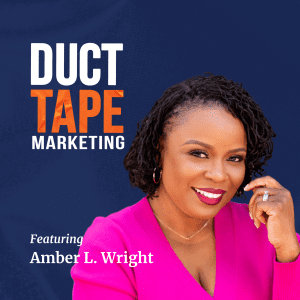
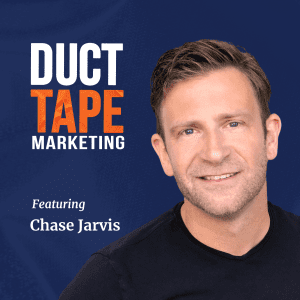

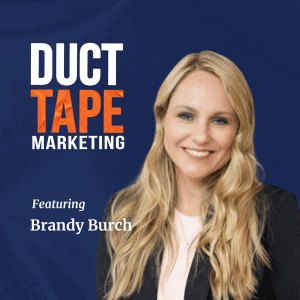

 Nobody does data better than Oracle. Train your AI models at twice the speed and less than half of the cost of other clouds. If you want to do more and spend less, take a free test drive at
Nobody does data better than Oracle. Train your AI models at twice the speed and less than half of the cost of other clouds. If you want to do more and spend less, take a free test drive at 

